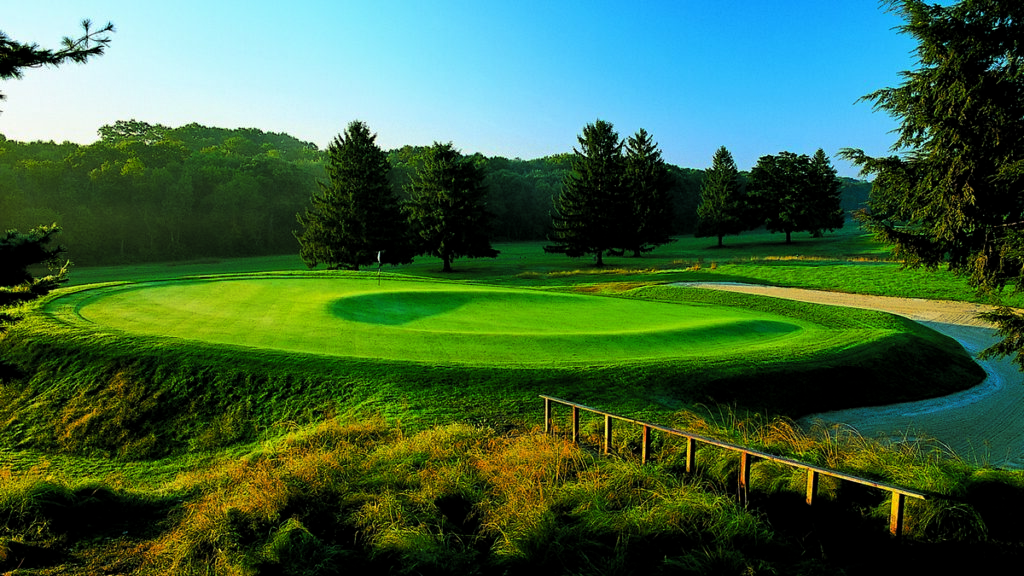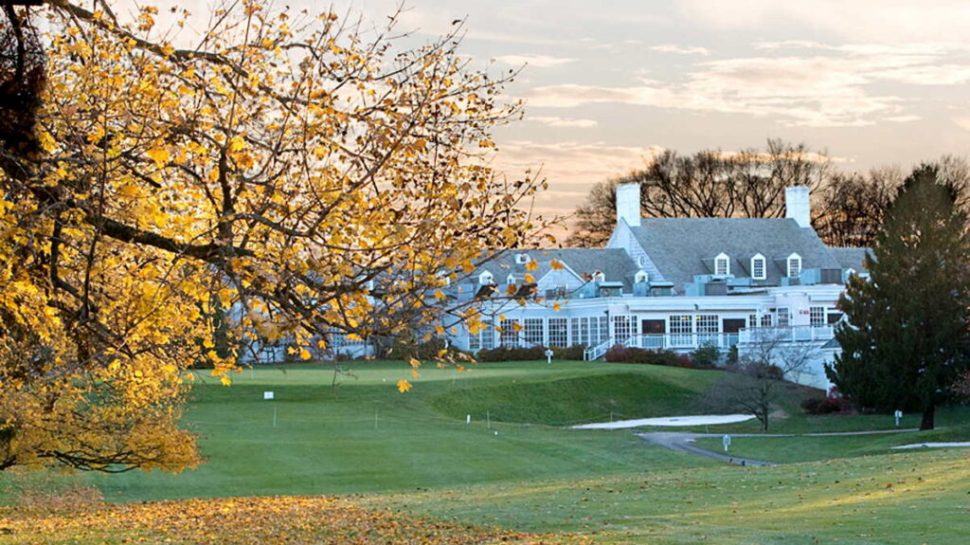
Estimated reading time: 9 minutes
New Jersey’s geographical size is rather small — 46th among the 50 States. However, on the golf side the pedigree is among the nation’s best — especially when the depth of private clubs is assessed.
The Garden State is home to such illustrious layouts as Pine Valley — regularly cited as the world’s most renowned course. Baltusrol Golf Club, the 36-hole layout is a seven-time U.S. Open venue as well as two PGA Championships with a 3rd planned for 2029. There are also a range of other noted clubs with the likes of Plainfield, Somerset Hills, Ridgewood, Hollywood, Mountain Ridge, Galloway National, Atlantic City, Essex County, to name just a few.
One specific facility that has escaped serious attention straddles the metro areas of New York City and Philadelphia. In Jersey speaking terms — when one heads to Exit 8A off the NJ Turnpike you arrive at Forsgate County Club in Monroe Township.

The brainchild of John A. Forster, a Scottish immigrant who became successful in creating Crum & Forster Insurance Company, he originally purchased 50 acres of land prior to the commencement of World War I and created a highly successful dairy farm. In the years to follow, Forster would add more acreage and his interest in golf motivated him to develop a course on the property.
The 18-hole layout opened in 1931 and was named “Forsgate” a combination of Forster’s last name and his wife’s maiden name Gatenby. The design was also the last 18-hole effort from the noted architect Charles “steam shovel” Banks. The talented architect was noted for creating imaginative green sites with deep flanking bunkers that required steam shovels to dig them out at considerable depths.
Banks was a teacher before becoming involved with engineer and fellow designer Seth Raynor who was mentored by the “Father of American Golf” — Charles Blair Macdonald — the man responsible for such iconic courses as The National Golf Links of America in eastern Long Island and the Chicago Golf Club.
The landscape of Forsgate — now called the Banks Course — since another 18-hole layout was added to the property years later — is rich in land movements and highlighted by vexing greens providing a bedeviling riddle for golfers to decipher. The holes embody principles found at the great courses where the game originated — most notably Scotland.
Banks, like Raynor, incorporated template holes mirroring concepts showcasing the character and breadth of these timeless classics. Credit must certainly go to the current ownership under the stewardship of Chris Schiavone. After Forster’s ownership ceased, the property went through different hands and for a time there was concern parts of the original layout would be sectioned off for housing. Schiavone skillfully brought back the aura that Forster envisioned in smartly updating the Banks Course and renovating the noted Clifford Wendehack clubhouse.
One of the central strengths of the Banks Course is the compelling quartet of par-3 holes. Each presents its own character and when combined together makes for a foursome of holes mandating the highest level of successful execution in order to reap the bounty of success. Conversely, those failing to rise to the challenge will be swiftly reprimanded with scorecard numbers not fully embraced.
Arguably, with the possible exception of Pine Valley, the quartet of par-3 holes on the Banks Course is at the top of the pecking order in all of New Jersey.
A full description of the four holes follows:
3rd Hole
“Eden”
216 Yards
Origin: 11th hole, St. Andrews Old Course / Scotland

The first two holes at the Banks Course are meant to get the muscles limbered up– getting ready for the challenges that awaits. The first of the quartet of par-3 holes comes with the 3rd.
The tee pad falls away into a valley area before rising to a devilishly elevated target.
Complicating matters is a fiendish green. The putting surface is artfully split by an ingenious spine. This puts a major premium on the approach — playing to the correct side where the pin is located that day. Failure to do so will considerably raise the stakes for players to escape without a costly three-putt or worse.
Deep bunkers flank the green as well as one in the rear area and menace golfers mercilessly.
Balls ending up in these deep pits will find extrication more of an idea than a likely reality.
The 3rd is the equivalent of an honest judge. No bribes accepted. Just present your case with vintage shotmaking. Nothing else will be accepted.
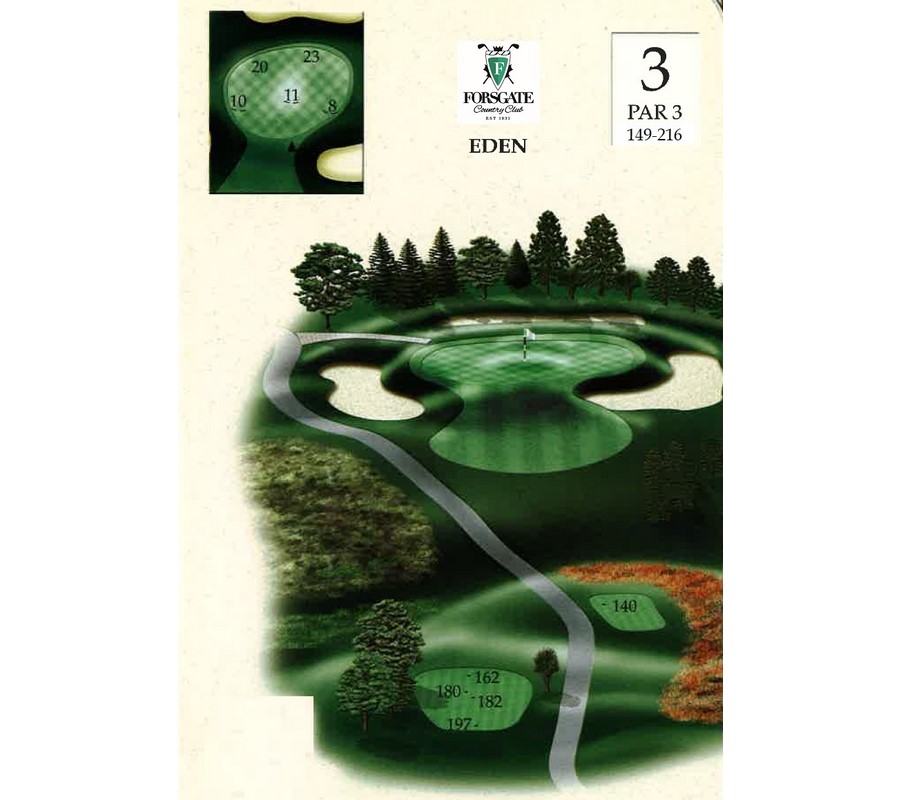
7th Hole
“Redan”
217 Yards
Origin: 15th hole, North Berwick GC (East Course) / Scotland

The concept of the Redan has been mimicked by a number of facilities worldwide but few actually carry it off in a successful manner. The general principles of the Redan is for a high frontal shoulder area to a diagonally angled green that runs away from the tee and protected by a deep frontal bunker and one nearest to the rear area. The most prominent traditional Redan in New Jersey is the 2nd at Somerset Hills in Bernardsville.
The 7th on the Banks Course smartly incorporates the concept but does so in a reverse fashion with the high shoulder area located on the left side.
The tee shot is played from an elevated area and gauging club selection is crucial. When the pin is cut towards the left front it takes a courageous shot to get near to the hole. Those coming up even the slightest amount short face a daunting second shot with the green plunging away from them.
The deep bunkers command respect because any attempt at recovery will be tested to the maximum of one’s golf ability.
Being able to skillfully marry the distance needed in tandem with the optimum trajectory and ball movement is a consummate challenge. The 7th is simply a brilliant hole.

12th Hole
“Short”
163 Yards
Origin: Suggested by the 5th at Brancaster (now Royal West Norfolk) / England
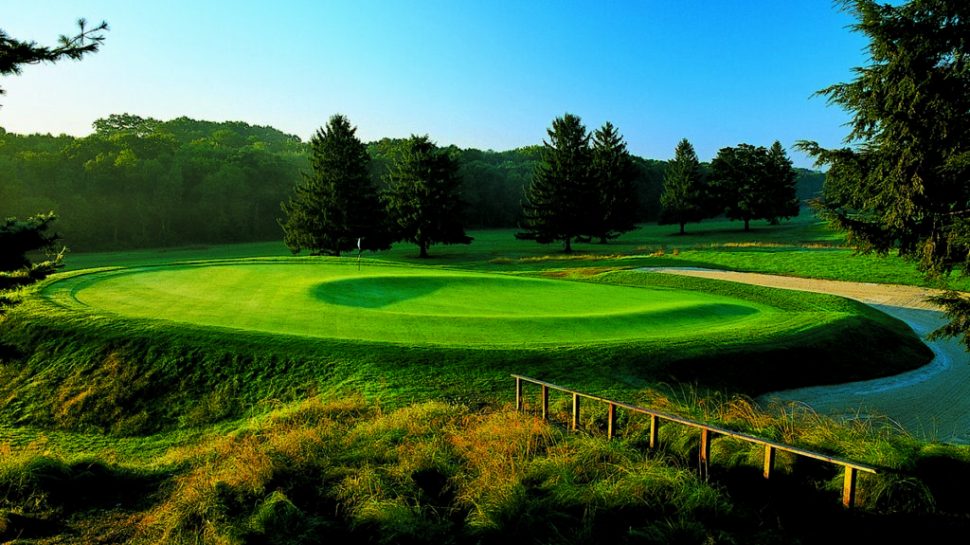
As you step on the tee the 12th presents a clear proposition — choose your club wisely because the requirements are quite exacting.
The putting surface features a horseshoe inclusion that appears as an upside-down letter “C.”
Success is based on being able to place one’s shot at the precise location where the pin is placed on a given day. The outer edges of the horseshoe can often have a pin placement tucked into the corners.
When the pin is placed in the centermost rear area the rigors of the hole can be quite intense. Being short of such a pin position can mean a testing two-putt situation. Go long and the wherewithal for a satisfying recovery becomes highly improbable.
The 12th brings to the forefront the critical skill in demonstrating the highest degree of dexterity with a short iron.
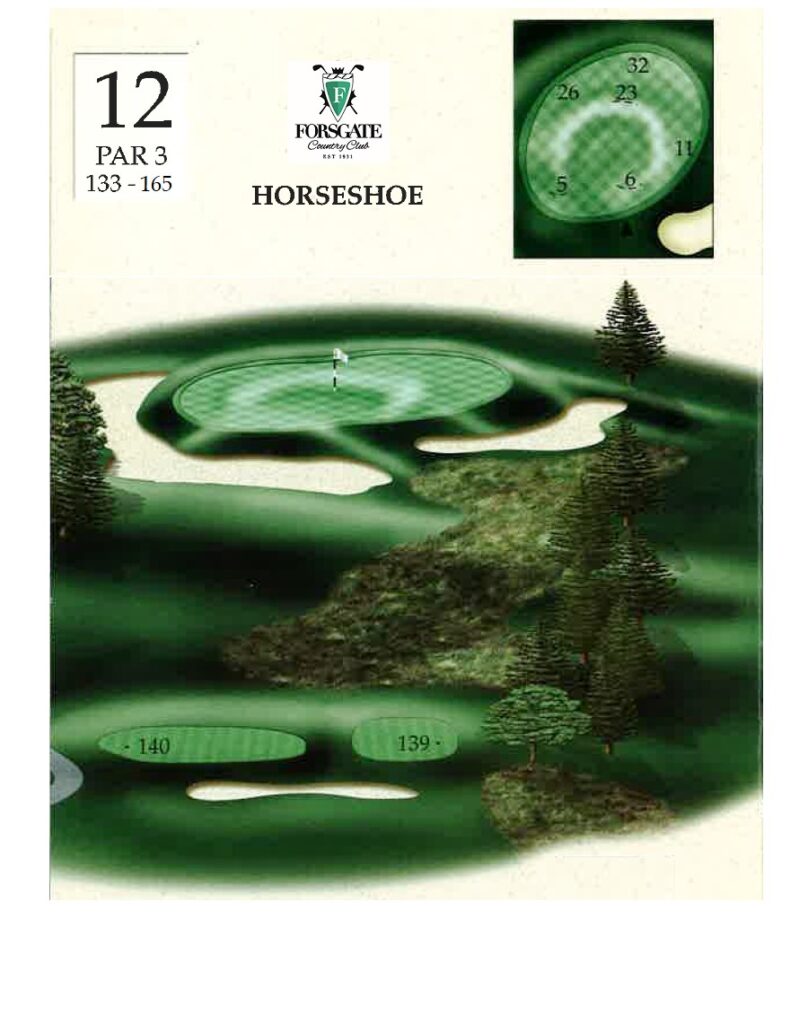
17th Hole
“Biarritz”
239 Yards
Origin: 3rd hole, Biarritz GC (no longer exists) / France

Bringing to life the actual design merits of a given hole is neither easy nor an automatic occurrence. In 2008, architect Stephen Key — who had been doing minor design work at Forsgate prior to that year — outlined his thoughts to owner Chris Schiavone on how the original vision of Banks could be brought back to life via a meaningful Biarritz style hole.
Two years passed before Schiavone “green-lighted” the project. In October 2010 work commenced. Kay’s task was to expand a green which had shrunk to a fraction of its original size. In the spring of 2012 work concluded.
The “new” putting green is now 16,000 square feet and is 83 yards in total length.
The concept of the Biarritz hole is a lengthy par-3 — generally in excess of 225 yards and featuring a puting surface that’s connected but with three distinct sections — front, middle and back. The middle section provides for a valley or dip area. In the Banks tradition — massive parallel deep bunkers flank the left and right sides of the green.
Where the flagstick is positioned determines club selection. The 17th permits hole locations at any of three sections and when the pin is in the rearmost position the total length can easily exceed 280 yards. There is also sufficient space for the hole to be located in the valley area too.
As the penultimate hole — the 17th serves as the final chapter for the four-scintillating par-3 holes faced. Those fortunate golfers able to play them collectively in 12 strokes or fewer are to be rightly saluted.
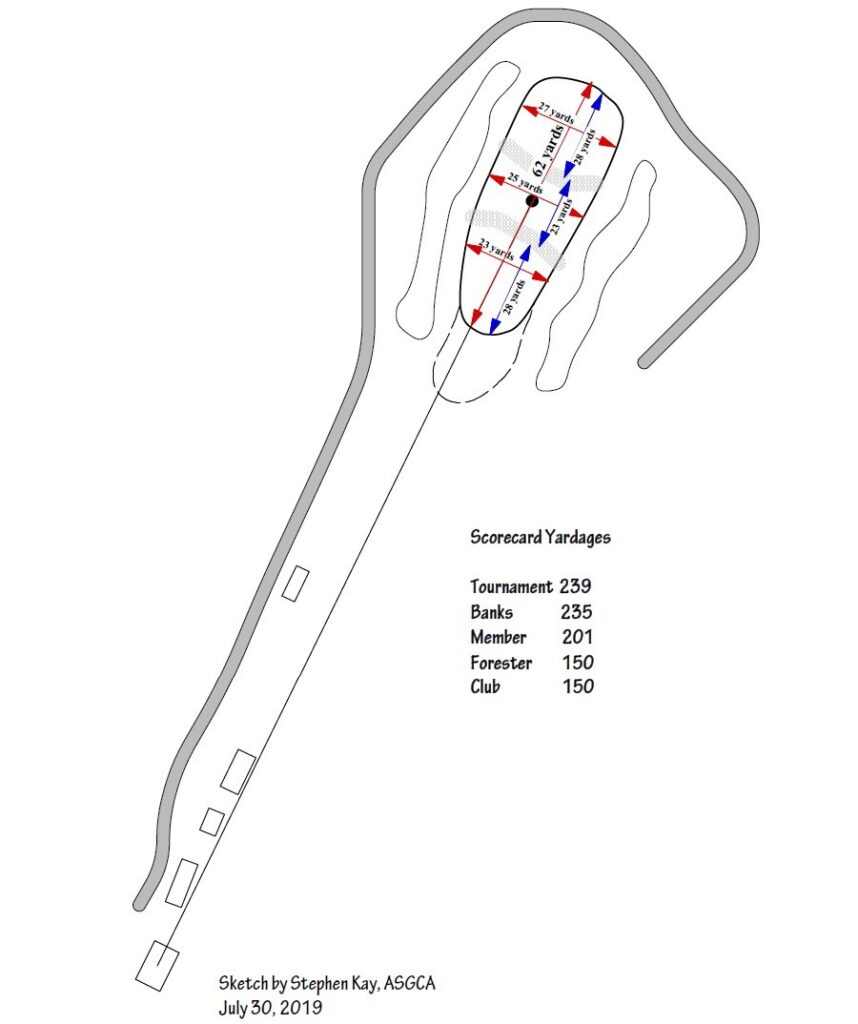
***
* 3rd, 12th and 17th holes — courtesy Jim Krajicek
*Clubhouse and 7th hole as well as 3rd, 7th and 12th renderings — courtesy Forsgate CC
*17th hole rendering,– courtesy Stephen Kay
